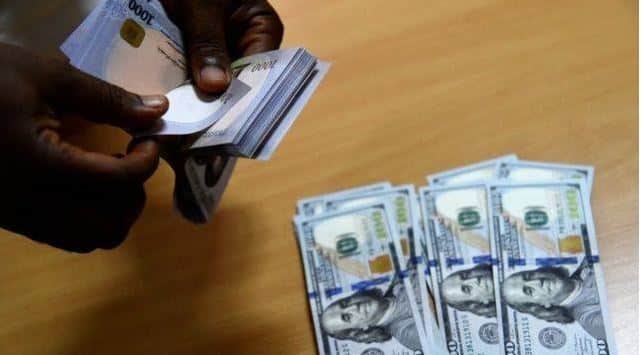Dollar to Naira is Now trading for ₦945
At the time of composing this report, the Nigerian naira has reached an unprecedented low, trading at N945 per dollar on the parallel market. Despite the central bank’s shift towards a more flexible exchange rate to stimulate inflows, the Nigerian naira continues to experience a downward spiral against the dollar, a trend persisting for two months.
The scarcity of available dollars within banks has left them unable to satisfy the escalating demand, prompting buyers to increasingly resort to the informal black market. This divergence between the official exchange rate and the street price is progressively widening.
According to data sourced from FMDQ, on Thursday, the naira commenced trading at N757 per dollar in the official market but exhibited considerable weakness at N945 per dollar on the black market. Consequently, this has created a gap of N188 between the two rates, marking the most substantial disparity since the central bank’s move towards exchange rate flexibility.
Ayo Teriba, the CEO of Economic Associates (EA), emphasizes the necessity for the Central Bank of Nigeria (CBN) to grant Bureau De Change operators (BDCs) equitable access to forex, mirroring the privileges of banks. Additionally, Teriba urges the CBN to reconsider the list of 43 forex-restricted items, advocating for their eligibility. Teriba articulates that achieving rate unification hinges on providing BDCs an even playing field with banks and expanding the range of permissible transactions.
Teriba underscores the significance of reviewing the roster of 43 forex-restricted items in the official market. He decries the practice of channeling transactions towards alternative avenues with distinct rates, asserting that true unification requires eradicating autocratic exclusion of legitimate participants and transactions, thereby curtailing the existence of multiple rates.
The initiative to unify foreign exchange systems aimed to streamline the structure and amplify dollar inflows. This endeavor initially led to a 40% decrease in the official exchange rate, momentarily aligning it with the black market rate. However, the persistently skewed balance between dollar supply and demand has fostered a widening gap between the two rates.
Ibrahim Tajudeen, the chief economist at ChapelHill Denham, attributes the depreciation of the naira and the disparity between rates to inadequate market liquidity. He highlights the correlation between deficient liquidity and widening gaps, asserting that such discrepancies are inevitable under these circumstances.
Furthermore, Tajudeen envisions a potential exacerbation of the situation when schools resume, anticipating heightened demand for foreign exchange to cover education-related expenses abroad. He contends that the existing value of the naira on the parallel market lacks support from underlying economic fundamentals and posits that the key remedy lies in augmenting inflows.




















